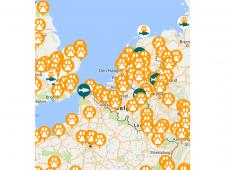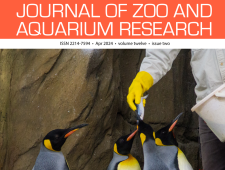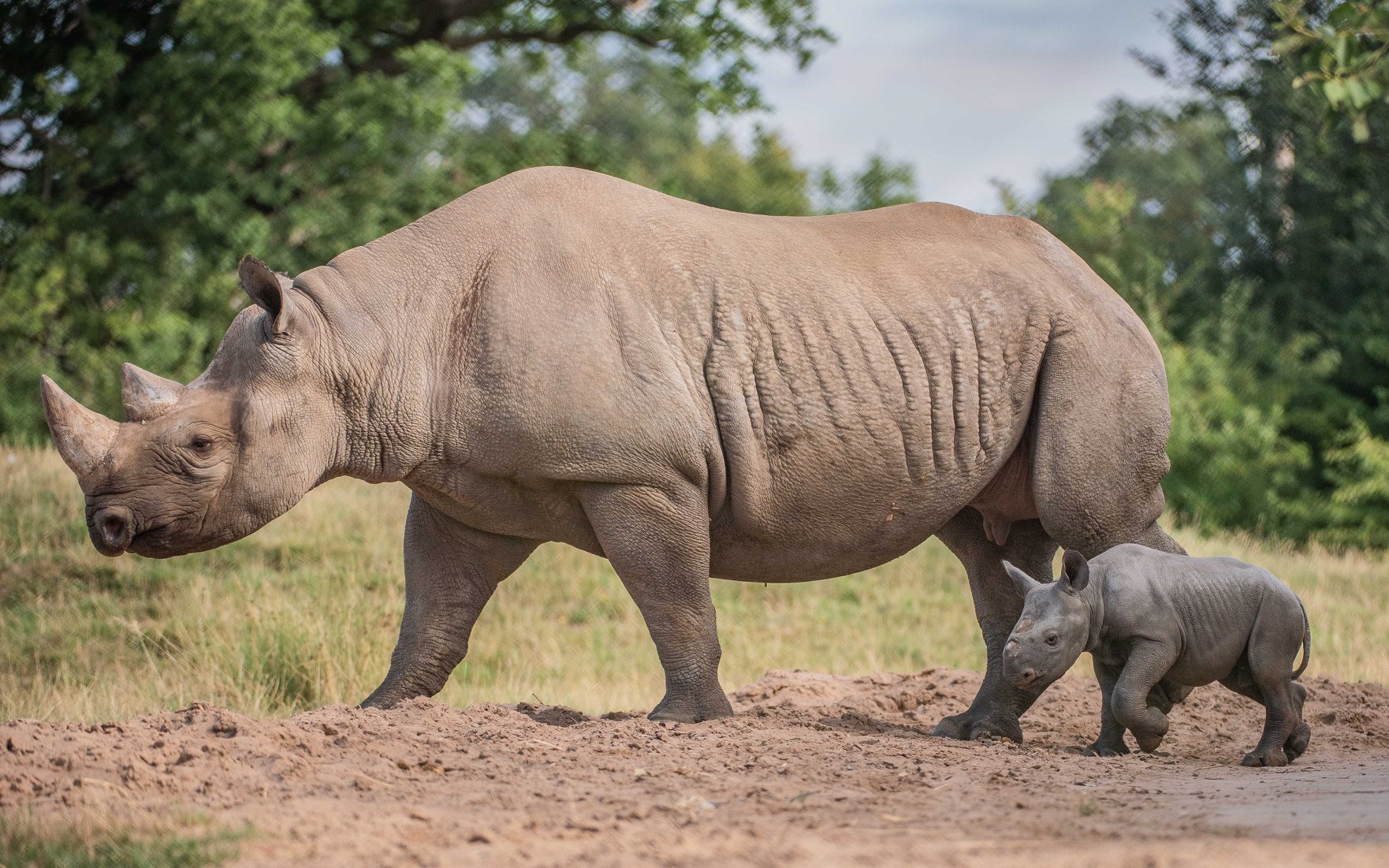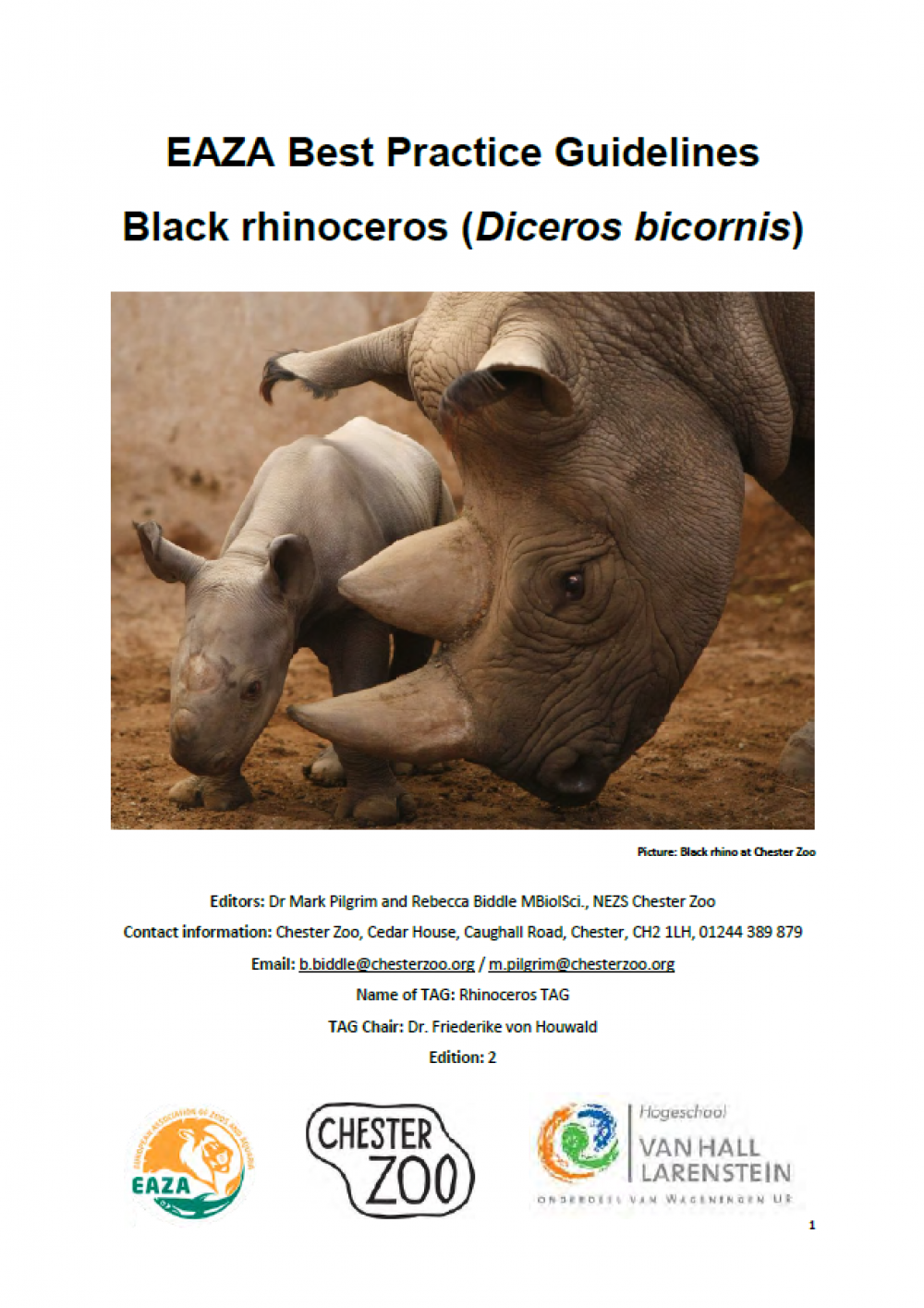Eastern black rhinoceros
Programme roles
| • Population restoration Supplementing the current population of Eastern black rhinocerosin Akagera National Park (Rwanda) with unrelated Eastern black rhinoceros from EAZA would be highly valuable to the sustainability of the Akagera population by improving the overall genetic diversity. Furthermore, it is believed that at least some of the founders of the European population came from that region of Africa and could hold some genetic diversity that is now completely unrepresented in any African population. The breeding success of this programme enables around five animals to be translocated to Akagera every few years if recommended. • Insurance population The Eastern black rhinoceros population within EAZA is managed to provide individuals for augmentation of populations (demographically and/or genetically) in range countries where possible, relevant and recommended by the appropriate authorities. • Conservation education In range countries it remains essential to deliver education on the value of nature as well as consumer behaviour. EAZA Members are encouraged to assist and where possible send educators to specific education/awareness raising projects through the established partner Save the Rhino. • Research (behaviour) Explore possibilities for a PhD research on post-release: study critical factors that determine success of a reintroduction (PhD). • Research (genetic) It is expected that the EAZA population holds genetic material that is no longer existing in situ. A PhD research funded by Chester Zoo aims to establish genetic profile of the (EAZA) ex situ population in relation to in situ populations to get more insight. |
|
| • Expertise Share knowledge and expertise on small population management (of rhinoceros) to for instance private holders when requested and coordinated through the IUCN AfRSG. • Fundraising Help raise funds for projects of the established partners like International Rhino Foundation and Save the Rhino or IUCN SGs identified activities - focusing on in situ research, security and/or capacity building. Long term commitments from EAZA Members are encouraged. • Forensics Individuals from the EAZA Population should be in the RhODIS (Rhino DNA Index System) database. Profiling rhinoceros horns contributes to determining poaching sources and networks, finetuning identification methods used as well as add to the safety of EAZA population. Sampling protocol available (EAZA Member Area). • Conservation education Within the EAZA region visitors are offered information about the effects of poaching and wildlife trafficking. Using materials and topics highlighted by established partners Save the Rhino and International Rhino Foundation is preferred. • Research (husbandry) The main topics that need continued attention are research on Iron Overload Disease (IOD) and how husbandry can improve longevity. |
Programme highlights
- The spring 2019 issue of Zooquaria features a full-length article about the rhinoceros TAG and rhino EEPs (Zooquaria issue #104, pages 16 and 17).
- In 2019, 5 Eastern black rhinos from the EEP were transported from Europe to Africa, to be released into the wild.
- EAZA press release - November 2018
- Article on Mongabay - August 2019
- EAZA Facebook page - hashtag #rhinostorwanda
- Get to know the black rhino with this video from Save the Rhino.
- In addition to the Best Practise Guidelines, the EEP also has the Black Rhino Husbandry website where information is made available regularly.
- EAZA published the 2021 Annual TAG Report.
 This work is supported by the European Union LIFE NGO funding programme. The European Union is not responsible for the views displayed in publications and/or in conjunction with the activities for which the grant is used.
This work is supported by the European Union LIFE NGO funding programme. The European Union is not responsible for the views displayed in publications and/or in conjunction with the activities for which the grant is used.










